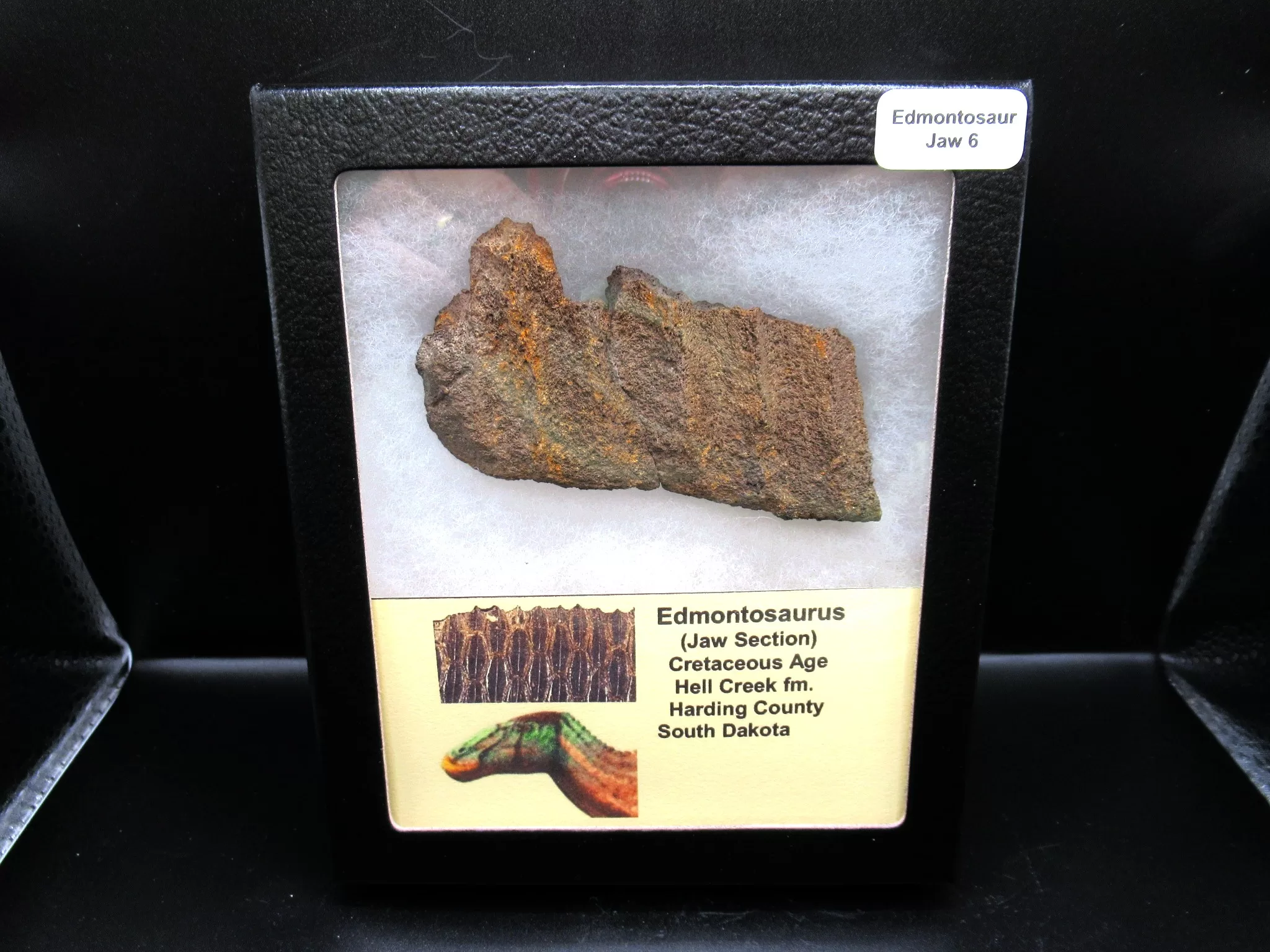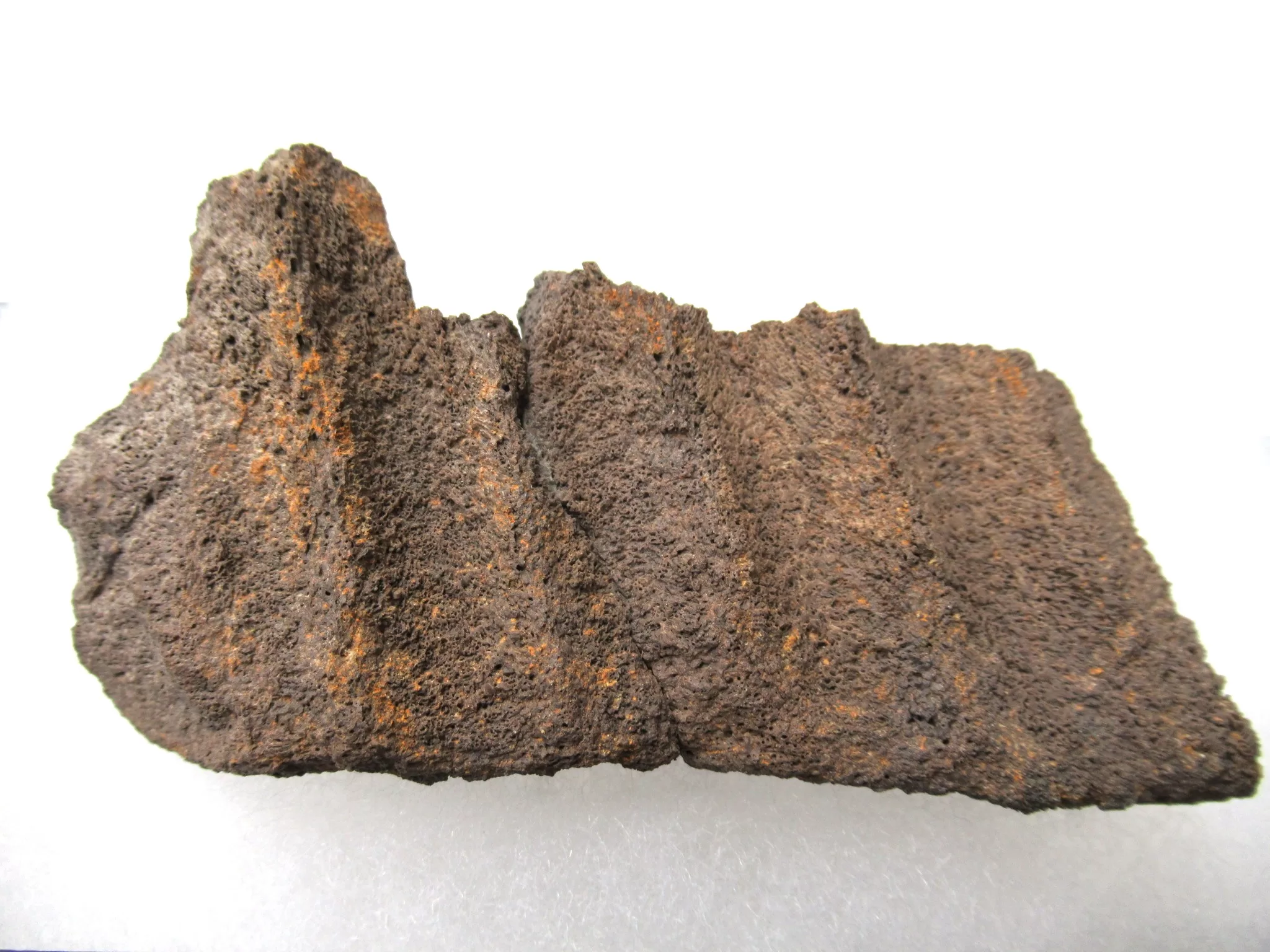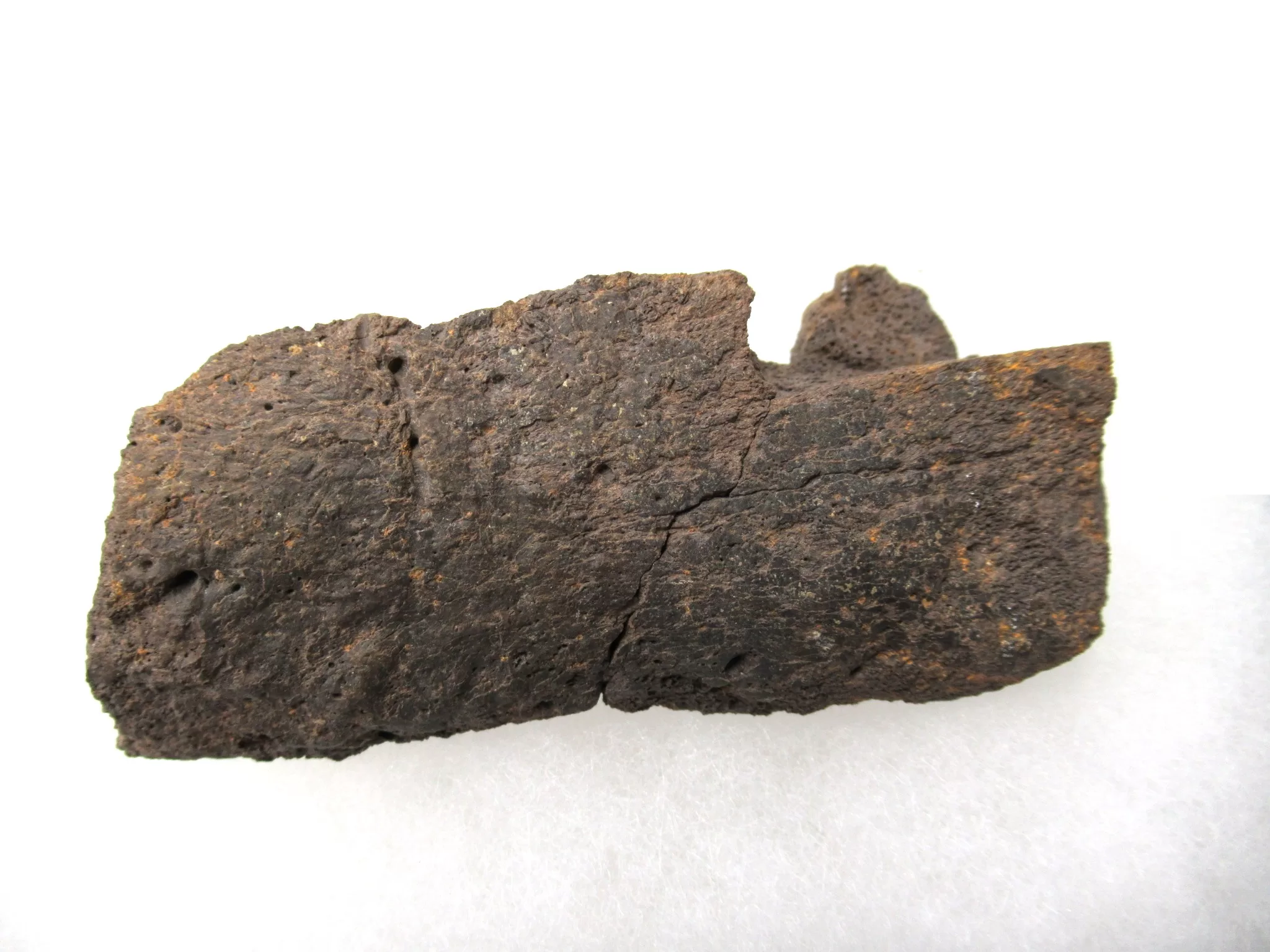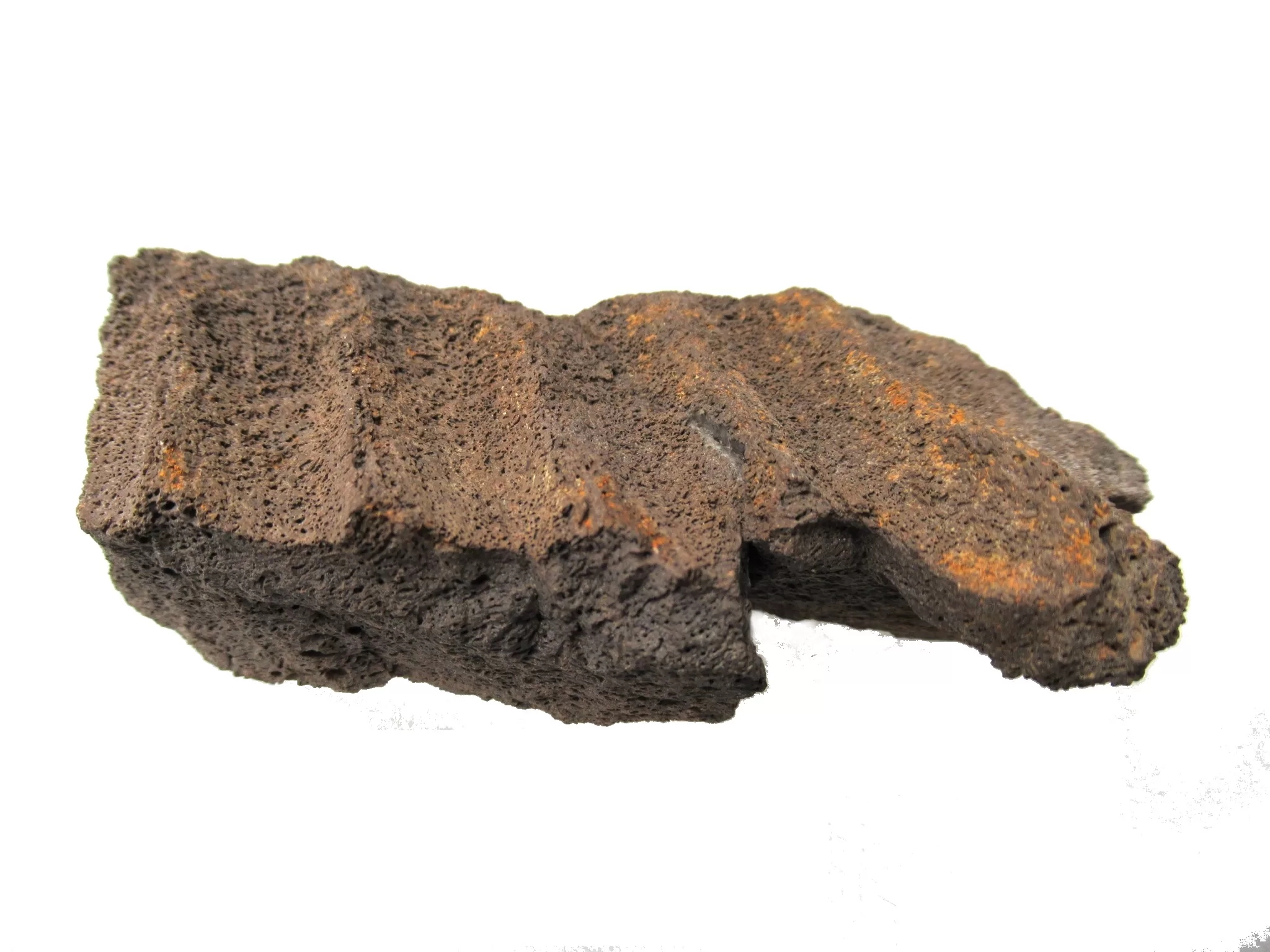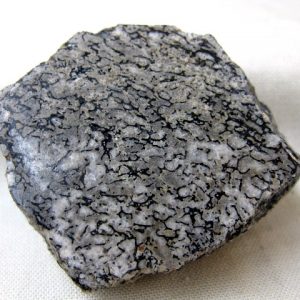Description
- Edmontosaurus annectens Jaw Section
- Cretaceous Age
- Hell Creek Formation
- Ziebach County, South Dakota
- Specimen measures approx. 3.65″ wide and will come in the 5.25″ x 6.25″ Riker Mount with Label as shown.
As a hadrosaurid, Edmontosaurus was a large terrestrial herbivore. Its teeth were continually replaced and packed into dental batteries that contained hundreds of teeth, only a relative handful of which were in use at any time.
Edmontosaurus is a genus of hadrosaurid (duck-billed) dinosaur. It contains two known species: Edmontosaurus regalis and Edmontosaurus annectens. Fossils of E. regalis have been found in rocks of western North America that date from the late Campanian stage of the Cretaceous Period 73 million years ago, while those of E. annectens were found in the same geographic region but in rocks dated to the end of the Maastrichtian stage of the Cretaceous, 66 million years ago. Edmontosaurus was one of the last non-avian dinosaurs, and lived alongside dinosaurs like Triceratops and Tyrannosaurus shortly before the Cretaceous–Paleogene extinction event.
Edmontosaurus has been described in detail from several specimens. Like other hadrosaurids, it was a bulky animal with a long, laterally flattened tail and a head with an expanded, duck-like beak. The skull had no bony crest, unlike many other hadrosaurids, but bore a comb-like crest of skin and scales. The fore legs were not as heavily built as the hind legs, but were long enough to be used in standing or movement. Edmontosaurus was among the largest hadrosaurids: depending on the species, a fully grown adult could have been 9 metres (30 ft) long, and some of the larger specimens reached the range of 12 metres (39 ft) to 13 metres (43 ft) long. Its weight was on the order of 4.0 metric tons (4.4 short tons).

